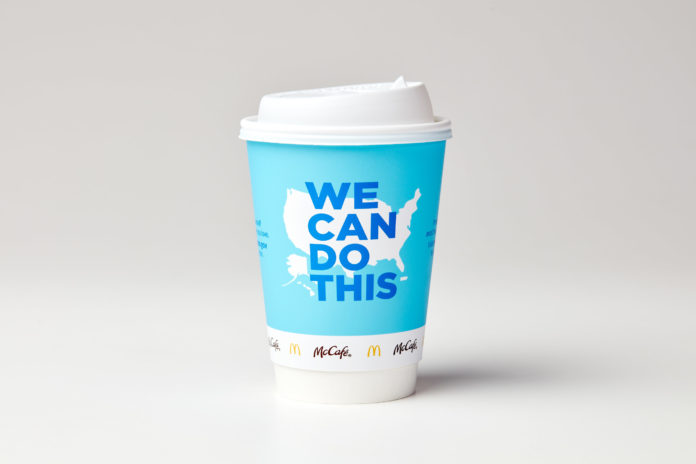
Vaccine hesitancy is up, but can better messaging from federal agencies boost vaccination rates—and confidence in vaccine makers?
Maybe, but first the Centers for Disease Control and Prevention (CDC) needs to spruce up its own image.
The agency is under mounting public criticism for slow-to-market and mixed messages, with public health officials calling the agency’s effectiveness into question in news interviews and on social media.
When CDC Director Rochelle Walensky, M.D., was asked on CNBC Wednesday how the CDC can regain its once “lofty perch,” she pointed to the complex and evolving science, saying simply, “Our guidance is evolving as the science evolves.”
Still, on “The News with Shepard Smith,” the host played her a clip from former Obama White House health policy adviser Kavita Patel, M.D., who said, “I think the CDC’s credibility is eroding as quickly as our cases of coronavirus are eroding. And Shep, that’s not good news because we do need workplace guidance, we need school guidance.”
‘Muddying the science’
The CDC’s latest image-damaging episode began two weeks ago when the agency came under fire for its updated mask guidance. That sparked criticism of its overstuffed chart of “safe, safer and safest” activities in green, red and yellow hues, featuring both masked and unmasked images.
Late night talk show host Trevor Noah dissed the chart as “unreadable” and “trash” in a video clip that spread widely on social media.
“I know science is difficult and this is a novel virus and all of that, but who’s running messaging at the CDC?” Noah quipped.
RELATED: Pharma industry’s reputation hits plateau amid spike in vaccine hesitancy
Then, late last week the CDC took another media hit when it updated guidance acknowledging that the coronavirus is an airborne threat—months after experts asked it to do so.
“CDC has not done as well as they could. It’s almost like an afterthought. They just need to use regular language,” WebMD Chief Medical Officer John Whyte, M.D., pointed out during a Medscape podcast last week.
Another group of public health officials said the CDC is “muddying the science.” While praising the agency’s science and public health voice in a Daily Beast column, they also pushed for clearer messaging.
“We need simple, easy-to-understand rules and focused communication to build trust on what is most important right now—vaccine confidence and uptake, along with masking and social distancing. That is just as important as the science of vaccines,” Lawrence Gostin, a professor of public health law at Georgetown University, and two colleagues wrote.
Turning around the slowdown
The danger? The CDC’s overly cautious messaging will push vaccine hesitation—already on the rise, thanks in part to the Johnson & Johnson vaccine pause and younger Americans not taking up the shots—and turn into a true stall-out.
Vaccinations have dropped off significantly. The seven-day average of administered vaccine doses per day last week was 2.1 million, a 26% decrease from the week before, the CDC reported. Overall, about 150 million people, or 45% of the U.S. population, have received at least one dose of vaccine with 109 million (33%) fully vaccinated.
Justin Chase, Intouch Solutions executive vice president on innovation and media, said because of the “growing lack of confidence (in the CDC) and ostensible mixed messaging, the U.S. is going to hit a wall in inoculation.”
Like other experts, he advised the CDC to adopt plain, easy-to-understand language and engage directly with people who have questions.
Chase also suggested tapping a cross-section of prominent people including “left, right, gay, straight, Black, Latinx” who would accurately reflect real everyday Americans. The “association and validation will help to rebuild some of the credibility the CDC has lost,” he said.
Another idea? Now that Pfizer’s vaccine is approved for 12- to 15-year-olds, the CDC should tap the perfect vehicle to reach them—TikTok. No ads or even PSAs, Chase warned, but rather partnerships with TikTok influencers.
The HHS playbook
A rebound is certainly possible. Recent Harris Poll data found that trust in government public service announcements and websites is at an all-time high, with 62% of Americans on board. That’s an increase of seven percentage points since September.
RELATED: HHS cancels celebrities, keeps science in massive pandemic ad campaign
The CDC might even take a page from parent organization Department of Health and Human Services (HHS). It’s now rolling out a multimillion-dollar vaccine ad blitz under the theme “We Can Do This,” tapping national TV, radio, print, digital and social media and forging partnerships with brands.
The newest HHS TV ad, “We Can,” debuted last week, featuring a broad swath of Americans across demographic groups. The ad simply promotes an all-in eligibility for vaccines for anyone over the age of 16.
This week, HHS added fast food giant McDonald’s as a partner. The chain is now rolling out vaccine information on its billboard in Times Square. Beginning in July, the chain will tout the “We Can Do This” campaign slogan on coffee cup labels and delivery order stickers.








